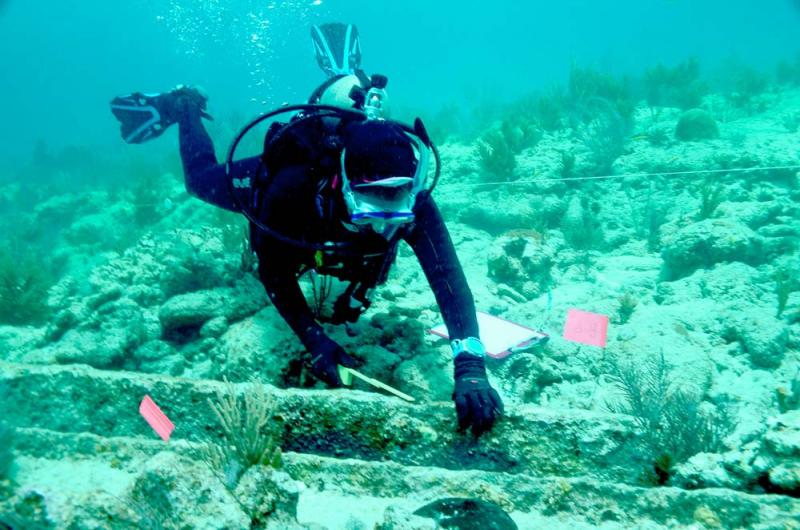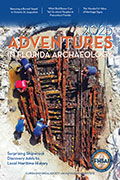The slave ship Guerrero was lost off the coast of south Florida on December 19, 1827, with 561 Africans aboard.
Underwater archaeologists believe that the ship has been found.
The Diving with a Purpose Underwater Archaeology Program began in conjunction with the National Park Service and the National Association of Black Scuba Divers, to have African Americans participate in the search for the slave ship Guerrero.
That effort was filmed for the PBS documentary series “Changing Seas” in the episode “Sunken Stories.” The program is produced by WPBT2 in Miami, and can be viewed on their web site at changingseas.tv.
“One of the main stars of the documentary was the late Brenda Lanzendorf, who was the underwater archaeologist for the Biscayne National Park,” says Erik Denson, lead diving instructor for the Diving with a Purpose Underwater Archaeology Program. “The National Park Service has over a hundred shipwrecks in the Biscayne National Park Area. She needed help to document the shipwrecks.”
Lanzendorf taught Denson and his group of mostly African American divers the basics of underwater archeology so they could assist in the discovery and documentation of the Guerrero.
“They gave us the skills to do a good job and to actually understand what we were doing as far as underwater archeology is concerned,” says Denson.
The illegal slave ship Guerrero was operated by pirates. The Guerrero was bound for Cuba with about 700 slaves aboard when the British Navy ship Nimble pursued and attacked. A storm came and both ships were shipwrecked on the reef off the coast of Key Largo.
As a result of the shipwreck, 561 of the Africans aboard the Guerrero perished.
Wreckers came to help get the ships off of the reef, but received an unexpected greeting.
“The pirates actually took one of the wrecker’s ships and ended up going to Cuba with some of the remaining slaves,” Denson says. “Some of the slaves were rescued and they ended up going to Key West, and eventually made their way back to Liberia.”
There were several possible places where the remains of the Guerrero could be located. Working with the Mel Fisher Heritage Society and the National Oceanic and Atmospheric Administration during excavations in 2010 and 2012, Denson believes they found and identified the slave ship.
“Through historical documentation we got an idea where this battle took place and where the shipwrecks came about,” says Denson. “We had a few different sites that we wanted to explore. We did magnetometer and site scan sonar to get hits in certain areas, so we narrowed it down.”
Positive identification of particular shipwrecks can be challenging.
Some of the artifacts uncovered that are believed to be from the Guerrero include a cologne bottle from the early 1800s, bone china, lead shot, blue edged earthenware, metal rigging, copper fasteners, and wooden plank fragments.
“Those key pieces of artifacts and evidence really point to that time frame,” says Denson. “We know that the Nimble lost its anchor during the battle, and we found an anchor for that type of ship, that era. So a lot of empirical evidence points to that site, that wreck.”
The artifacts from shipwrecks are not as easy to spot as it might seem. It takes experienced divers with trained eyes to locate these objects.
“These things have been down there for hundreds of years, and they’re covered with corral,” says Denson. “You have to look for things that don’t occur in nature, right angles and shapes that look man made.”
Denson and his divers meticulously document shipwrecks with trilateration mapping, drawings, measurements, and photographs.
The members of Diving with a Purpose are not treasure hunters searching for gold and other valuable objects.
“We abide by a code of ethics,” says Denson. “These are historical sites that need to be preserved and protected. In the case of the Guerrero, there may be human remains there.”
Since forming in 2005, Diving with a Purpose Underwater Archaeology Program has trained many underwater archaeology advocates who have become DWP instructors themselves. The organization has assisted with the search for slave shipwrecks around the world, including off the coast of Africa.
“These ships are an important part of our history,” says Denson.








